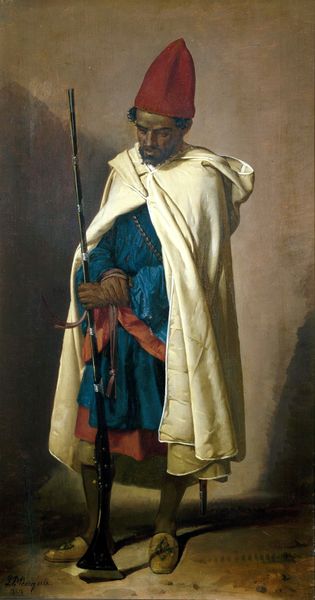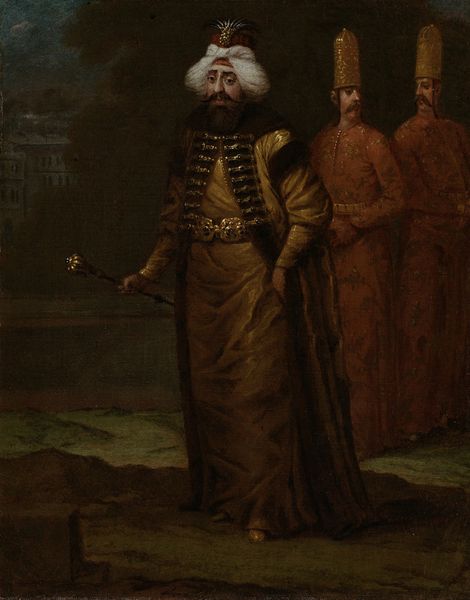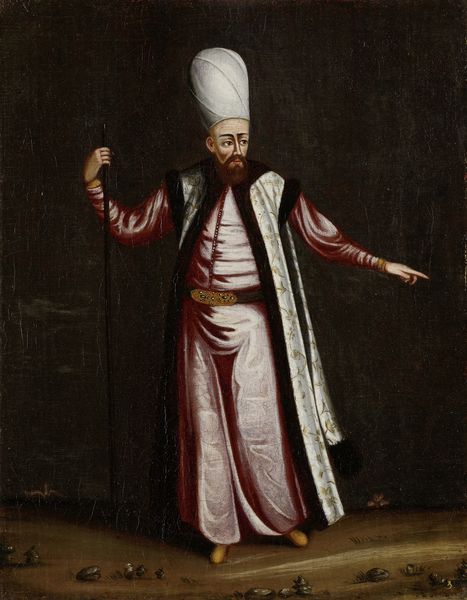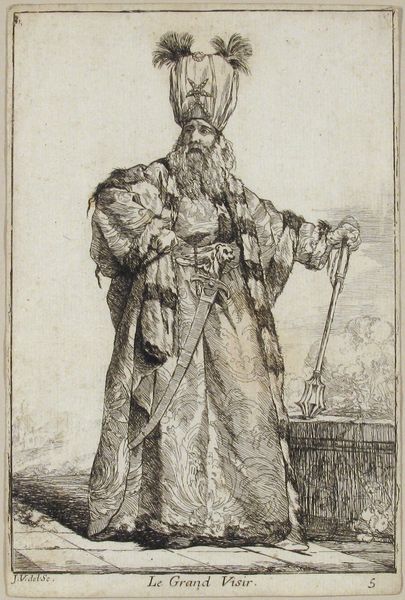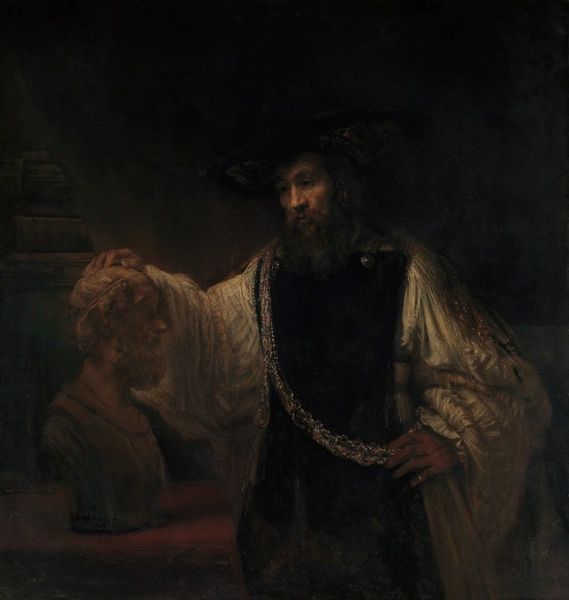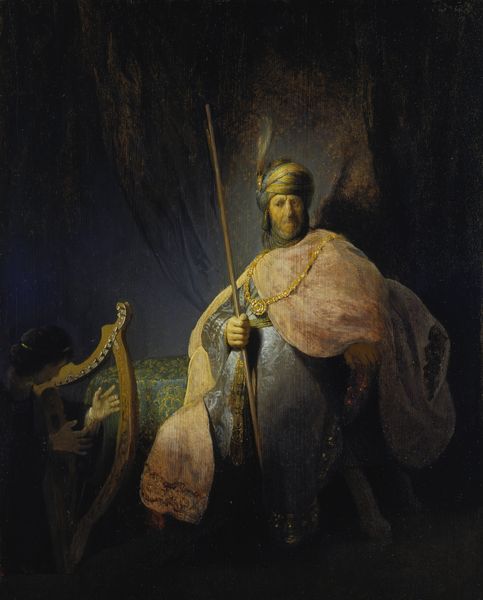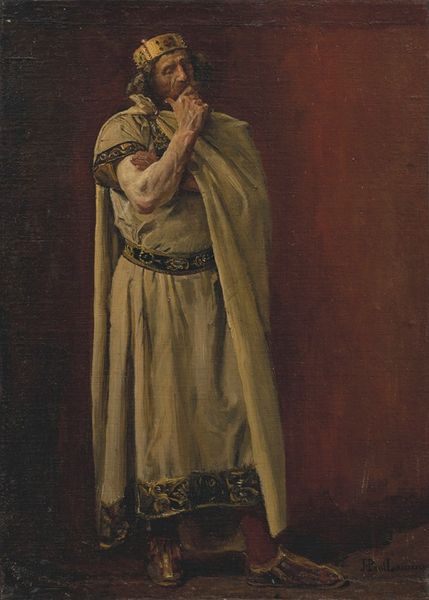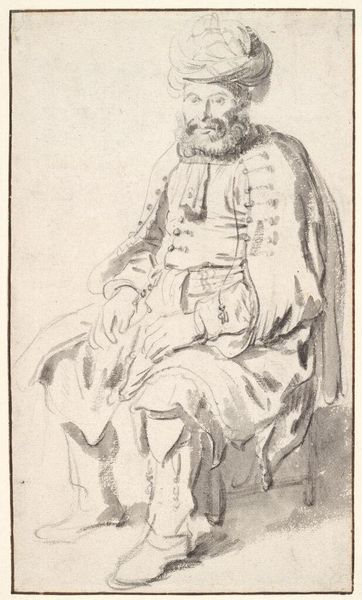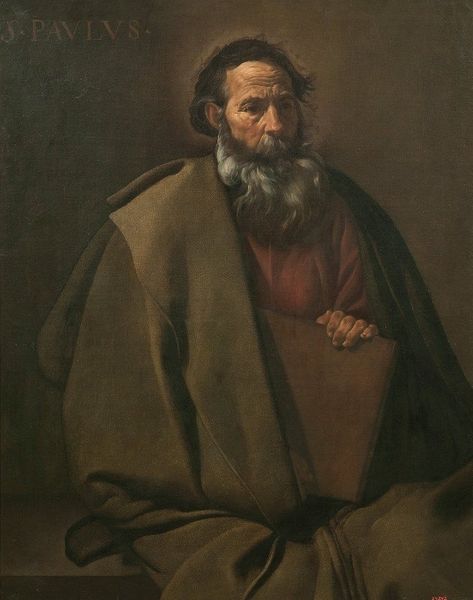
oil-paint
#
portrait
#
baroque
#
oil-paint
#
oil painting
#
islamic-art
#
portrait art
Dimensions: height 33.5 cm, width 26 cm, weight 1.6 kg
Copyright: Rijks Museum: Open Domain
Editor: So, here we have "Grand Vizier Nevşehirli Damat İbrahim Paşa," an oil painting by Jean Baptiste Vanmour from around 1727-1730. There's something very still and imposing about him, a kind of quiet power in the portrait. What stands out to you most when you look at this piece? Curator: Funny you say "quiet power"— that's exactly the impression I get! It's more than just a portrait, isn’t it? It's like a frozen moment, a study of status and... vulnerability? The soft palette and the almost ethereal quality of his robes belie the firm hand he likely held. Look at how Vanmour uses light; it isn't just illumination, it’s almost a character itself, highlighting the textures of his clothing and the gravitas of his face. And that turban—it's practically a statement on its own! Almost daring you to see beyond the opulent layers of the Ottoman court. Doesn’t it make you wonder what he’s holding in his hand? Editor: It does, like a tightly held secret. It's fascinating how you mention the vulnerability. I wouldn't have immediately jumped to that conclusion, but it does add another layer of complexity, making the Vizier feel more human. What does this tell us about how Vanmour was painting people versus just painting their roles? Curator: That's the genius, I think! Vanmour doesn't just capture likeness; he distills something about the *being* within. And placing this artwork into its cultural moment; remember, he's painting during the Tulip Era, a period of relative peace and cultural exchange with Europe. It wasn't just documentation; it was part of a much wider, sophisticated conversation. Editor: I’m looking at this painting in a totally new light. Curator: That’s the beauty of art, isn’t it? A single brushstroke can open up entire worlds, provided you're ready to ask questions. It almost inspires one to pick up the brush oneself, doesn't it?
Comments
rijksmuseum over 2 years ago
⋮
The sultan was the head of state, but the grand vizier was the most powerful man behind the scenes. Together with the Imperial Council, he was in charge of the daily running of the Ottoman Empire. Under the joint rule of Sultan Ahmed III and Grand Vizier Ĭbrahim Pasa, Turkish culture experienced a period of prosperity known as the Tulip Era.
Join the conversation
Join millions of artists and users on Artera today and experience the ultimate creative platform.
